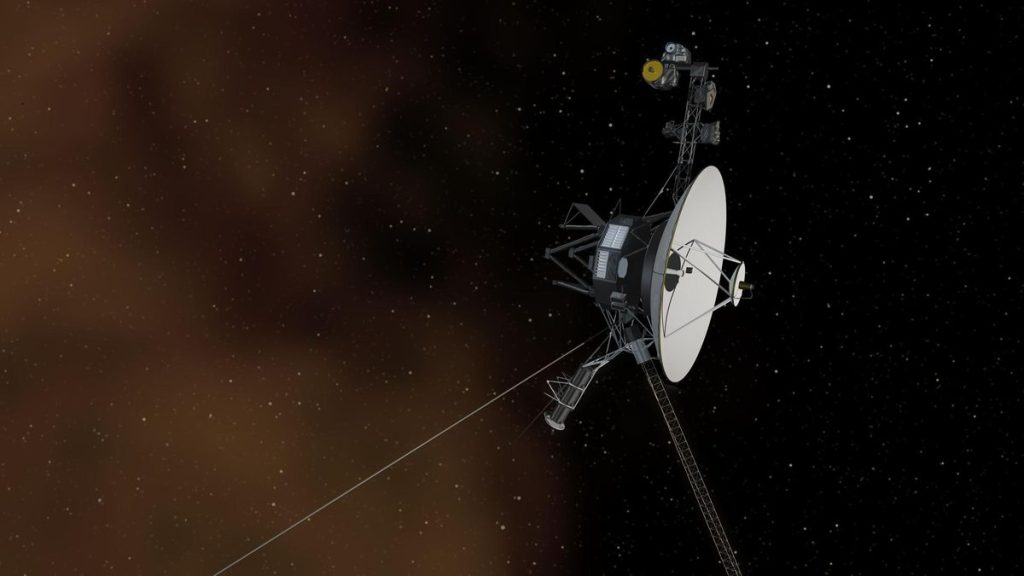
Voyager 1 interstellar spacecraft finds its voice again as NASA restores communications (Image Credit: Space.com)
NASA has confirmed that one of its greatest ever missions, Voyager 1, is back in business with communications restored following an incident in October that had led to the veteran spacefarer losing its voice.
Now 47 years old, Voyager 1 is 15.4 billion miles (24.9 billion kilometers) from Earth, a distance that grows greater with every passing second. With the power supply from its decaying plutonium dwindling, only four of its instruments remain operational — and surprisingly so, given they are now all working at temperatures lower than they were originally designed for.
So, when engineers commanded Voyager 1 to switch on one of its heaters to give the instruments a gentle thermal massage, a safety feature was tripped because of low power levels. The spacecraft’s fault protection system monitors how much energy Voyager 1 has left, and if it deems there to be too little energy for the probe to continue operating, it automatically switches off non-essential systems. It seems that the heater was using too much energy, but the problem was that all the non-essential systems had been switched off long ago to conserve what little power remained, so the fault protection system took it upon itself to switch off the main X-band transmitter and activate the lower-power S-band transmitter instead. Because of the great distance between Voyager 1 and Earth, however, transmissions on the S-band antenna could not be heard by NASA’s Deep Space Network, meaning that Voyager 1 had effectively fallen silent.
NASA engineers were able to resolve the problem early in November, and X-band communication resumed on Nov. 18, with the spacecraft once again returning data from its four remaining instruments: the Low-Energy Charged Particle Experiment, the Cosmic-Ray Telescope the Triaxial Fluxgate Magnetometer and the Plasma Waves Experiment.
Related: NASA shuts off Voyager 2 science instrument as power dwindles
It’s not the first time Voyager 1 has experienced communication problems; the spacecraft has certainly been showing its age. In 2022 and 2023, Voyager 1 began returning garbled telemetry, the latter issue taking until the summer of 2024 to resolve. And in 2023, its twin Voyager 2 experienced a period of communications difficulties. This latest problem just exemplifies how fragile the spacecraft and their subsystems really are.
Of course, this should not come as a surprise. Both Voyager 1 and 2 are considered quite elderly now, and it doesn’t help that they are the farthest spacecraft from home, traversing a cold, dark environment. Like you might worry about an elderly relative, every slight stumble that the Voyager probes make is alarming. And yet, the two Voyager spacecraft seem to be outlasting predictions that they would have succumbed to low power levels by now. Their remaining instruments keep operating as they explore the depths of the outermost solar system beyond the Kuiper Belt, although Voyager 2 was forced to switch off its Plasma Science instrument in September — the first instrument on either spacecraft to have been switched off in 16 years.
And, as each spacecraft loses 4 watts of energy per year from its total energy budget— as the decaying plutonium in their on-board radioisotope thermoelectric generator begins to ebb — their lifespan will ultimately be curtailed. If they can reach their half centuries, which is looking promising, it would be a magnificent achievement. The two Voyagers may now be old and require constant TLC, but they are true trailblazers. Having launched mere weeks apart in 1977, they have explored the outer solar system, discovered a wealth of detail about Jupiter and Saturn‘s moons, including the intricacies of Io‘s volcanoes, visited some planets for the first and still the only time (Uranus and Neptune), passed clean through the Kuiper Belt and exited the sun‘s heliosphere, entering interstellar space.
Yet, when they do eventually succumb to the night, the Voyagers won’t stop. They’ll continue ploughing their lone furrows as they begin long orbits around the galaxy. Their story is just beginning.








